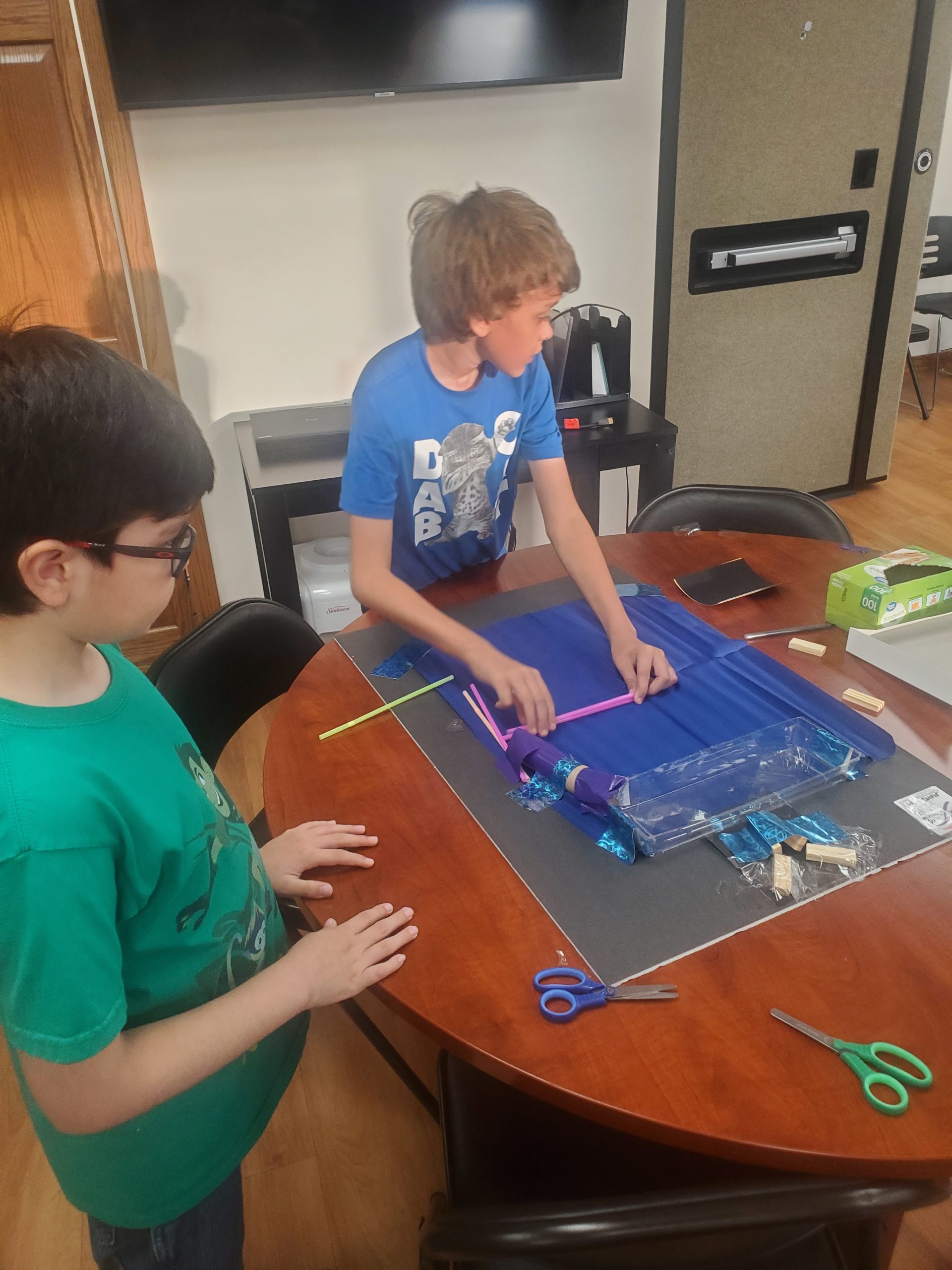
St. Lucy Parish in Racine hosted a five-week “Faith and Science” program this summer to show how the two can work together. (Submitted photo)
Sarah Amason wants to change the misconception that science and faith are incompatible.
Amason, the director of children’s formation at St. Lucy and St. Sebastian Parishes in Racine, has introduced a summer program to do just that — “Faith and Science.”
As the daughter of a Catholic chemist, Amason never had trouble seeing the harmony between God and science but has come to understand it has become an issue for many, including children.
Amason also attended horticulture school and enjoyed a lifelong passion for science. Much of her zeal stems from her parents, who encouraged her to observe the world and how it works.
“Through my father, I had a great example of a scientist who is a devout Catholic,” she said. “I wanted to respond to the idea that faith and science are not compatible. I have heard so many people say that humanity has progressed beyond God, that science replaced God. In (my) program, I have tried to show that science is the ‘how’ (the way the world works) and God is the ‘why’ (because God designed everything).”
The Faith and Science program ran for five consecutive Wednesdays beginning June 22 and was open to children ages 10-14. There were 17 students enrolled, and they met at St. Lucy Parish, where four presenters alternated Wednesdays with various science lessons.
“Most nights there was a slide presentation, and I incorporated activities and experiments that correlated with their presentations,” Amason said. “Trevor Beach, director of evangelization at the Cathedral of St. John the Evangelist, started the program by explaining theology and the history of science in the Church. Fr. José Mario Nieto Restrepo, who works as part of the Catholic Community in Central Racine, gave a talk on astronomy. Our third speaker was Amanda McCauley, a science teacher at St. Catherine’s High School in Racine. Her presentation focused on physics. Our final speaker was Cheryl Maraccini from St. Rita School in Racine; she talked about biology.”
They each explained how to see God in science.
“McCauley told students regarding patterns and mathematics in nature, that our world is not random. Also, the fact that we have laws of physics within our world,” said Amason. “We also focused on science being the how and God being the why. Trevor Beach did a great job explaining that God is outside of our natural world. He is not an ingredient in our world, if our world is a recipe, he is the ‘baker.’ We discussed that science doesn’t explain the ‘why,’ that we also need to look to other truths to know why a song can move us to tears or why a poem can be beautiful.”
On the final night of the program, students shared their experiments. They also incorporated activities such as dissecting flowers and marble mazes, and learned outer-space trivia.
“We even did an experiment that shows a visual of Jesus defeating our sin by turning dirty water clear,” Amason said. “I provided a snack each week to keep with the theme of each night. We made color-changing lemonade, (ate) flowers and had galaxy cupcakes. On the last night, we made butter and whipped cream to see the physical changes we can produce from heavy cream.”
The students were excited to attend the program each week, and 13-year-old Ryan Tremeling said he was interested in learning how Christianity and science can work together.
“I did a science fair project comparing sugar to sucralose,” Tremeling said. “When we studied physics, we built a marble run. The goal was to keep our marbles in motion for as long as possible. We dissected a flower to help us understand biology.”
Through his participation in the program, Tremeling said he has a greater understanding that God is the reason behind science.
“Science is how God works,” he said. “Many times, people think that science and religion and God work against each other, but I have an understanding that that is not true.”
Tremeling’s favorite aspect of the program was his science fair project because he was able to be creative while exploring his culinary interest in baking.
“I hope that this program is offered next summer. I would like more kids to come and gain this knowledge. I’d love to do the program again. There is a lot more to learn,” he said. “The speakers showed me different careers in science, which opened my mind to having a career in the science field. I’d maybe like to pursue a career in zoology or the culinary arts.”
Tremeling’s experiences are not alone, said Amason. She said the program helped the children see the way our modern world views God and science with the beautiful harmony our Catholic faith shines between the two.
“The children see that this is a ‘yes’ to both topics, not a one or the other,” Amason said. “The feedback has been great. Parents have reached out letting me know that they appreciate this topic being addressed. I have received support and encouragement from many DREs and youth ministers. I was so excited when our pastor, Fr. Thomas Vathappallil, supported this idea.”
Amason plans to make this an annual summer program. She is contemplating some changes to the format and time commitment involved for families.







